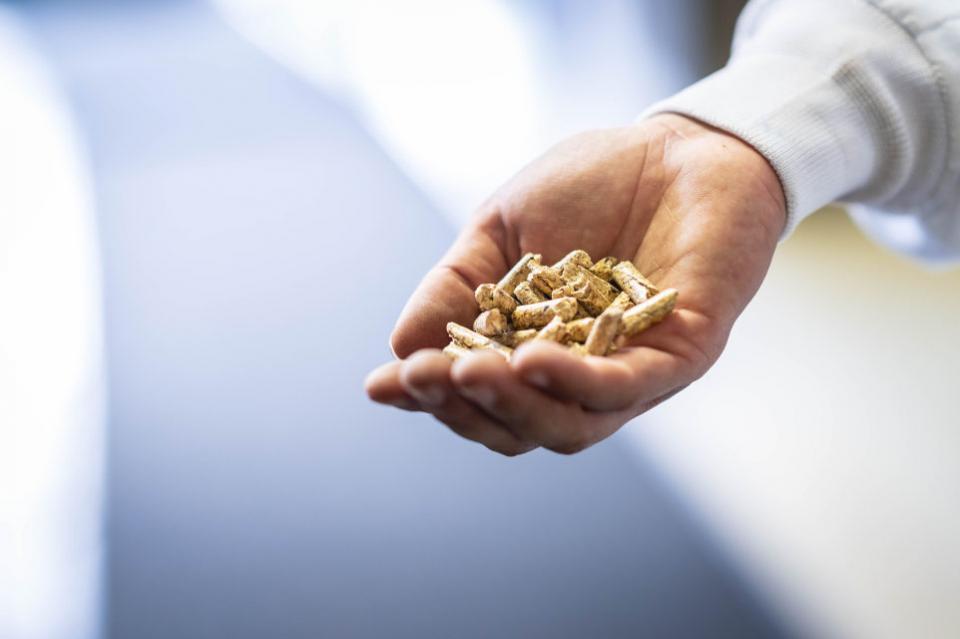
News
Bioeconomy
Environment & Sustainability
Forestry
New UBC bioenergy facility to work towards reducing reliance on carbon-intensive fossil fuels
September 27, 2021 By Sukanya Ray Ghosh
 Wood pellets from forestry waste, which can be transformed into premium biofuel. (Photo: UBC)
Wood pellets from forestry waste, which can be transformed into premium biofuel. (Photo: UBC) The University of British Columbia has a new research and demonstration facility that will focus on speeding up the development of low-carbon, market-ready bioenergy products and carbon-negative energy systems.
The new Biorefining Research and Innovation Centre (BRIC) will build on the work conducted by the university’s Clean Energy Research Centre (CERC) over the past 15 years. Top academic researchers and industry partners will team up to create technologies that could reduce our reliance on carbon-intensive fossil fuels significantly.
“There is enormous potential for biomass like BC forest waste to help meet both local and global renewable energy needs,” says Dr. Xiaotao Bi, director of BRIC and CERC and a professor of chemical and biological engineering at UBC. “BRIC offers a unique opportunity not only to transform organic materials into low-carbon, high-value fuels and other bioproducts but to do so at a demonstration scale in a virtually risk-free environment.”
BRIC will first assess the technical effectiveness and economic potential of each candidate technology. The UBC team will then collaborate with partner companies to create prototypes and demonstrate their ability to produce quality bioproducts at scale.
BRIC’s projects will include:
- advanced two-stage fluidized bed gasification technologies to convert forest, agricultural and municipal waste into low-carbon biofuels (e.g., a novel two-stage fluidized bed gasification pilot plant for future commercial-scale demonstration at a BC pulp and paper mill)
- novel microwave-assisted fluidized bed catalytic pyrolysis technology to improve the quality of two intermediate products in the biofuel production process: bio-oil (a potential petroleum substitute) and biochar (a carbon sink, soil conditioner and reducing agent)
- novel horizontal pulsating fluidized bed torrefaction technology that will produce second-generation (torrefied) wood pellets for energy-intense applications (e.g., power plants and metallurgical processing)
“By using biomass residues to their full potential, BC could cut greenhouse gas emissions by up to 15 per cent of its 2005 levels and its consumption of fossil fuels by nearly a third,” says Bi. “The low-carbon and carbon-negative technologies that will be developed at BRIC will help Canada meet its 2030 and 2050 greenhouse gas mitigation targets and potentially reverse some of the environmental damage that has already been done.”
Canada Foundation for Innovation, the BC Knowledge Development Fund, Western Economic Diversification Canada and the UBC Faculty of Applied Science support this $8 million BRIC project.
Organizations interested in discussing a bioenergy-related project with UBC Applied Science, can contact UBC through its research page.
Print this page